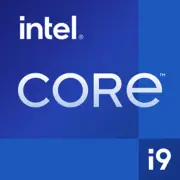Intel Core i9-7940X X-series

Intel Core i9-7940X X-Serie: Umfassender Test des Prozessors von 2025
Architektur, Leistung und Relevanz im Zeitalter neuer Technologien
1. Hauptmerkmale: Die Power von Skylake-X
Der Intel Core i9-7940X-Prozessor, der 2017 veröffentlicht wurde, bleibt auch im Jahr 2025 eine Nischenlösung für Fachleute. Seine Architektur Skylake-X basiert auf einem 14-nm-Fertigungprozess, was im Vergleich zu den modernen 7-nm- und 5-nm-Chips von AMD und Intel mittlerweile veraltet ist. Dennoch bieten seine 14 Kerne und 28 Threads (Basisfrequenz 3,1 GHz, Turbo-Modus bis zu 4,4 GHz) eine hohe Multithread-Leistung.
Wichtige Merkmale:
- Unterstützung von AVX-512 zur Beschleunigung wissenschaftlicher Berechnungen und Rendering.
- 19,25 MB Cache (L3).
- 44 PCIe 3.0-Lanes (im Vergleich zu PCIe 5.0 in neuen CPUs).
- Entsperrter Multiplikator für Übertaktung.
Leistung:
- Geekbench 6: 1333 (Single-Core), 9537 (Multi-Core).
- In Multithread-Anwendungen (z. B. Rendering in Blender) übertrifft er viele 8-Kern-CPUs aus den Jahren 2023-2024, kann allerdings modernen Ryzen 9 7950X3D (16 Kerne, Geekbench Multi-Core ~24,000) nicht das Wasser reichen.
2. Kompatible Motherboards: LGA 2066 Plattform
Der Prozessor nutzt den Socket LGA 2066 und den Chipset X299, was die Auswahl an Motherboards limitiert. Im Jahr 2025 sind neue Platinen selten, jedoch sind Modelle auf dem Gebrauchtmarkt verfügbar:
- ASUS ROG Rampage VI Extreme (Gebrauchtpreis: 200–300 $).
- MSI X299 Gaming Pro Carbon AC (Gebrauchtpreis: 150–250 $).
- Gigabyte X299 AORUS Ultra Gaming (Gebrauchtpreis: 180–270 $).
Auswahlmerkmale:
- Überprüfen Sie die Unterstützung von DDR4-2666 MHz (offiziell) und die Möglichkeit zum Übertakten des Speichers.
- Für das Übertakten der CPU ist ein Board mit zuverlässigem VRM erforderlich (z. B. 8+ Phasen-Stromversorgung).
- Stellen Sie sicher, dass die benötigten Ports vorhanden sind (USB 3.1 Gen2, Thunderbolt 3 über zusätzliche Controller).
3. Speicher: Quad-Channel DDR4
i9-7940X unterstützt Quad-Channel DDR4 mit einer maximalen Kapazität von 128 GB (Frequenz bis zu 3600 MHz bei Übertaktung). Empfohlene Konfigurationen:
- 4×16 GB DDR4-3200 (optimal für Rendering).
- 8×8 GB DDR4-3600 (maximale Bandbreite).
Wichtig: DDR5 wird nicht unterstützt. Für Anwendungen, die hohe Speichergeschwindigkeiten erfordern (z. B. AI-Modellierung), ist dies ein gravierender Nachteil.
4. Netzteil: Mindestleistung 750 W
Mit einer TDP von 165 W und einem maximalen Verbrauch von bis zu 300 W (bei Übertaktung) ist ein PSU mit Reserven erforderlich:
- Mindestanforderung: 750 W (z. B. Corsair RM750x).
- Empfohlen: 850–1000 W (Seasonic PRIME TX-850, Be Quiet! Dark Power 12).
Tipp: Verwenden Sie ein PSU mit 80+ Gold/Platinum-Zertifizierung und separaten 8+4 Pin-Kabeln für die CPU.
5. Vor- und Nachteile
Vorteile:
- 14 Kerne für 400–600 $ (neue Reste im Jahr 2025).
- Guter Übertaktungspotenzial.
- Geeignet für Workstations.
Nachteile:
- Hoher Stromverbrauch und Wärmeentwicklung.
- Keine PCIe 4.0/5.0 und DDR5.
- Veraltete Architektur im Vergleich zu Zen 4/5 und Intel der 13. Generation.
6. Anwendungsszenarien
- Arbeitsaufgaben: Videobearbeitung (Premiere Pro), 3D-Rendering (V-Ray), Code-Kompilierung.
- Gaming: Nicht die beste Wahl — in Full HD fällt er hinter Ryzen 5 7600X aufgrund des niedrigen IPC zurück. Aber in 4K mit RTX 4090 wird der Unterschied geringer.
- Multimedia: Streaming + Kodierung ohne Verzögerungen.
Praktisches Beispiel: Editor Alexei verwendet den i9-7940X mit 64 GB DDR4 und RTX 4080 zum Rendern von 8K-Videos. Laut ihm bewältigt die CPU die Aufgaben auf dem Niveau des Ryzen 9 7900X, wird jedoch wärmer.
7. Vergleich mit Wettbewerbern
- AMD Threadripper 1920X (12 Kerne): Günstiger (250 $ gebraucht), aber schwächer in Multithreading (Geekbench Multi-Core ~7000).
- Intel Core i9-13900K (24 Kerne): 30% schneller im Single-Core, unterstützt DDR5 und PCIe 5.0 (Neupreis: 550 $).
- Ryzen 9 7950X (16 Kerne): Multi-Core ~24,000 in Geekbench 6, aber teurer (600–700 $).
Fazit: Der i9-7940X bleibt nur im Budgetbereich bis 500 $ und mit einem Bedarf an Multithreading ohne Plattform-Upgrade relevant.
8. Tipps zum Zusammenbau
- Kühlung: Eine Wasserkühlung (z. B. Arctic Liquid Freezer II 360) oder ein Top-Kühler (Noctua NH-D15) ist notwendig.
- Gehäuse: Mindestens 6 Ventilatoren für die Belüftung.
- Motherboard: Suchen Sie nach Modellen mit Kühlern auf dem VRM und BIOS-Updates aus den Jahren 2022+.
- SSD: Verwenden Sie NVMe PCIe 3.0 (Samsung 970 Evo Plus) — schneller als SATA, aber ohne Aufpreis für PCIe 4.0.
9. Fazit: Für wen ist der i9-7940X 2025 geeignet?
Dieser Prozessor ist eine Überlegung wert für:
- Profis mit begrenztem Budget, die viele Kerne für Rendering benötigen.
- Enthusiasten, die bereit sind, mit Übertaktung auf einer veralteten Plattform zu experimentieren.
- Besitzern von X299, die ihr altes System ohne Austausch des Motherboards aufrüsten möchten.
Alternativen: Wenn moderne Technologien (DDR5, PCIe 5.0) benötigt werden, sind der Ryzen 9 7900X oder der Intel Core i7-14700K die bessere Wahl.
Letztes Urteil: Der Intel Core i9-7940X ist eine „Arbeitsmaschine“ für spezifische Aufgaben, aber nicht für Gaming oder zukünftige Upgrades gedacht. Sein Hauptvorteil im Jahr 2025 ist der Preis auf dem Gebrauchtmarkt und die bewährte Zuverlässigkeit.
Basic
CPU-Spezifikationen
Speicherspezifikationen
Verschiedenes
Benchmarks
Im Vergleich zu anderen CPUs
In sozialen Medien teilen
Oder verlinken Sie uns
<a href="https://cputronic.com/de/cpu/intel-core-i9-7940x-x-series" target="_blank">Intel Core i9-7940X X-series</a>